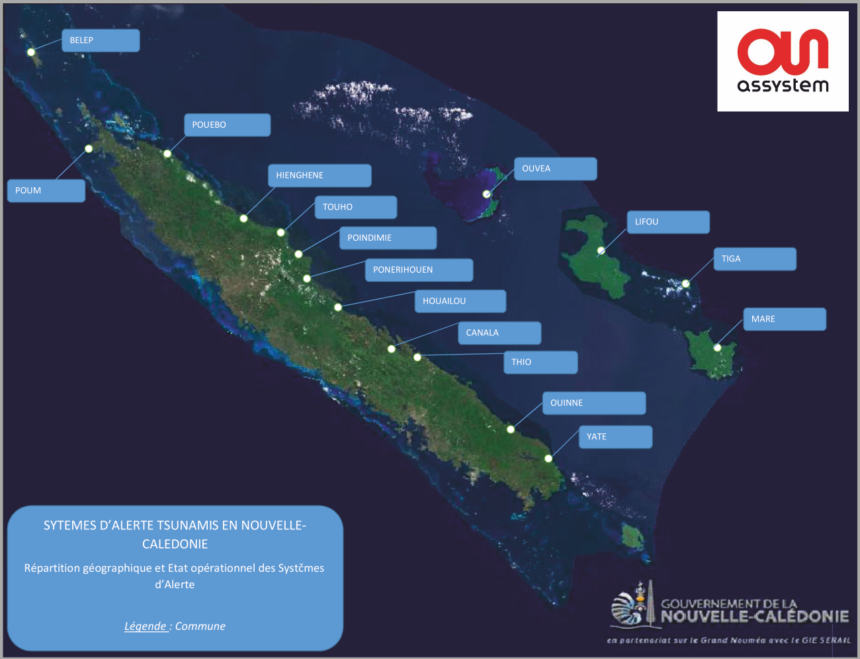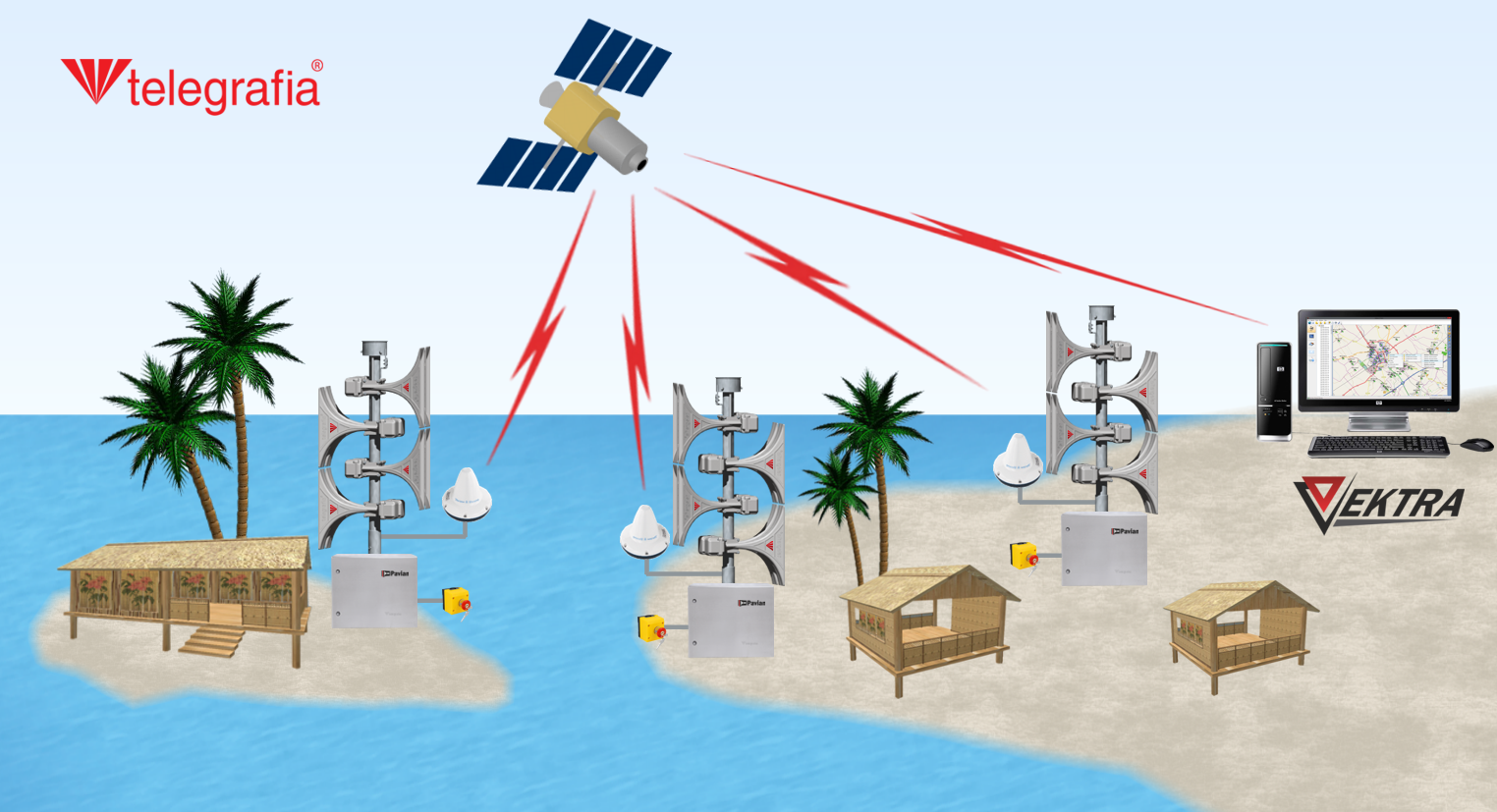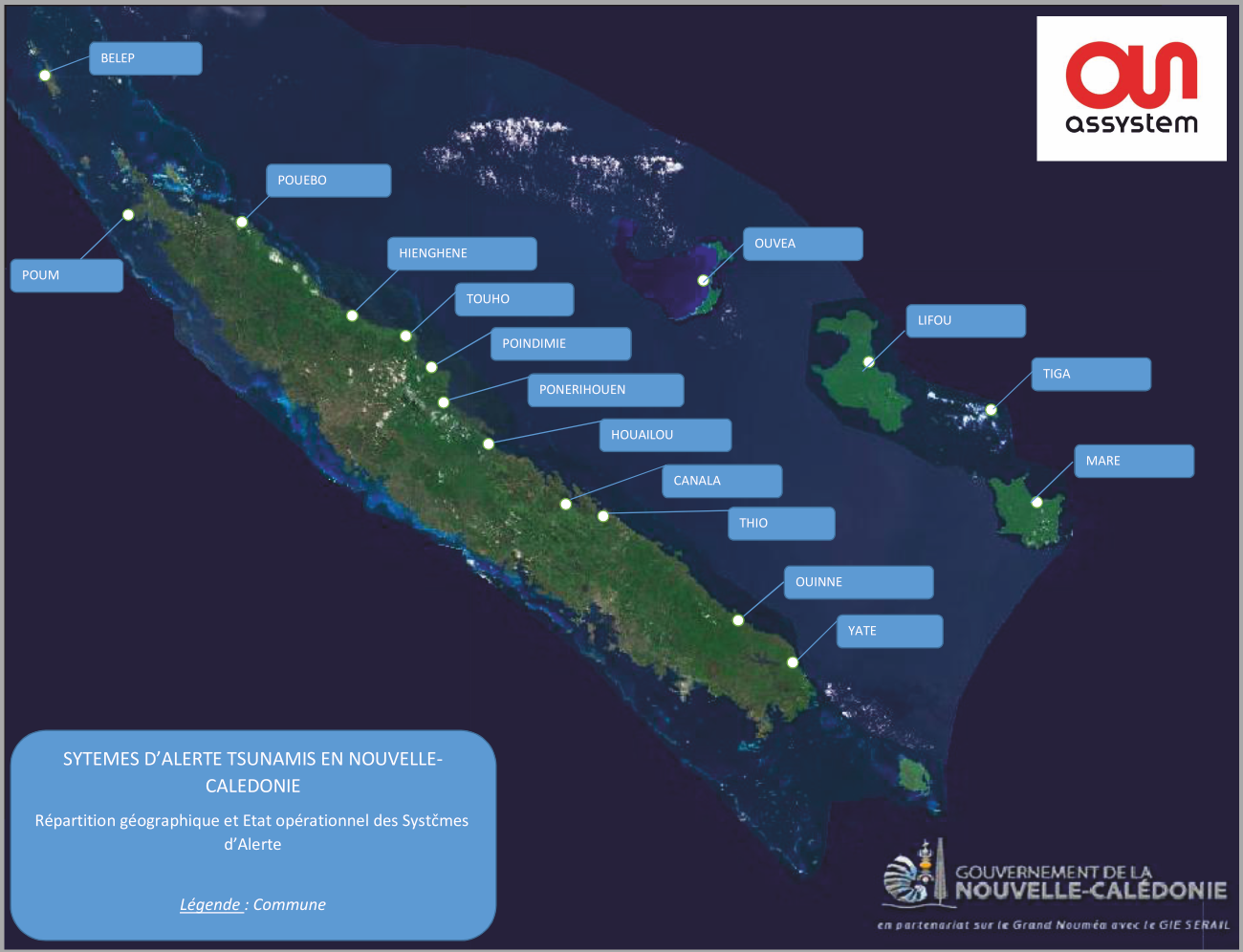
The first tsunami siren alert on the New Caledonian island of LIFOU after essential maintenance in 2015
The New Caledonian tsunami siren project in details
Name of the project: Population tsunami alert system in the French Pacific
Country: New Caledonia
Goal of the project: Equipment of the French National Civil Security with a global tsunami alert system for the evacuation of people along the high-risk locations
Number of tsunami sirens: 60 Pavian tsunami sirens
Date of maintenance: 2015
Lifou after successful tsunami siren maintenance
The island of Lifou was discovered by a French traveller, Jules Dumont d’Urville, in 1857 and nowadays it is known to many tourists for its enticing nature, stunning beaches, soft golden sand, and pristine and picturesque landscape. It is a home to approximately ten thousand people. The irregularly shaped (81 km long and 16 to 24 km wide) island is an overseas Pacific territory of France, located in the archipelago of New Caledonia – Loyalty Island Province.

The beauty of transparent water and tropical aura lures numbers of tourists to the place every year where they find a pleasant rest and relief from the monotony of daily routines. In addition to its beautiful face, the island has its bad side as well, which results from its dangerous location. The Pacific is geologically one of the most active fields on Earth, producing dangerous tsunamis. They take a deadly toll: since the beginning of the 20th century they have killed thousands of people around the Pacific Ocean. Thanks to improved tsunami detection methods, authorities are able to take action more effectively today.
Numerous procedures and policies supported by high-tech solutions have been implemented with a single goal – to warn the population before the wave reaches land in order to prevent major destruction and loss of life. Tsunami sirens have become an indispensable part of the warning ecosystem on the island. Installed in the most endangered areas, high-output tsunami sirens are now able to transmit both well-audible alarm signals and live-voice messages if any emergency should arise.
Regular maintenance is an activity that ensures that people trust warning systems. By performing routine actions which keep the devices fully functional, they are 100% confident that tsunami sirens are ready for use in need.

